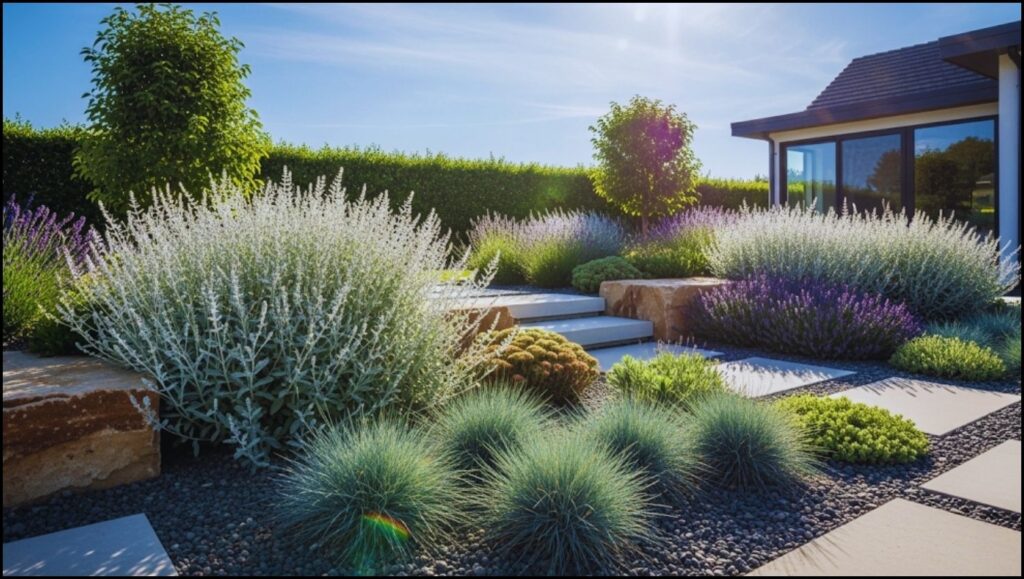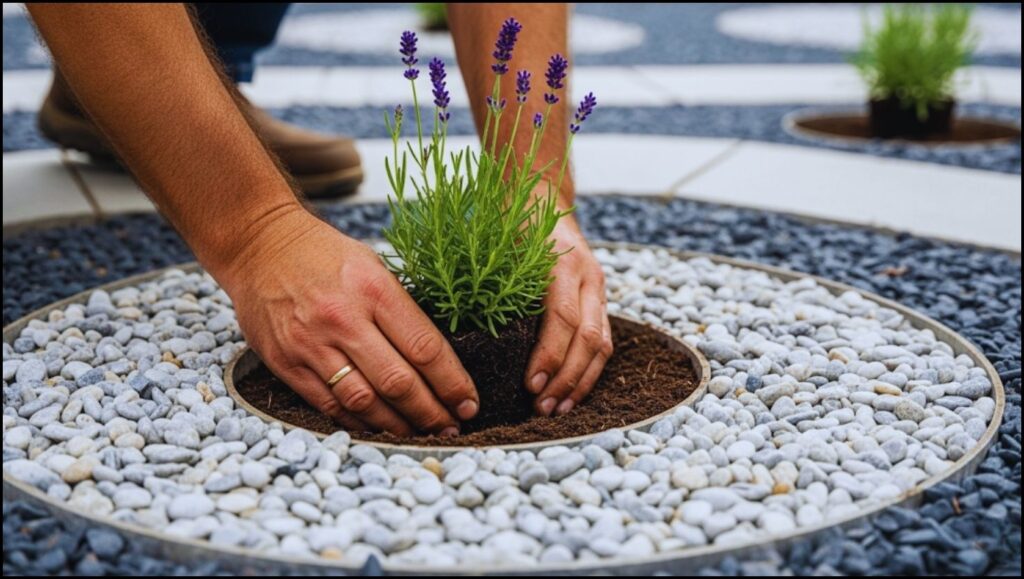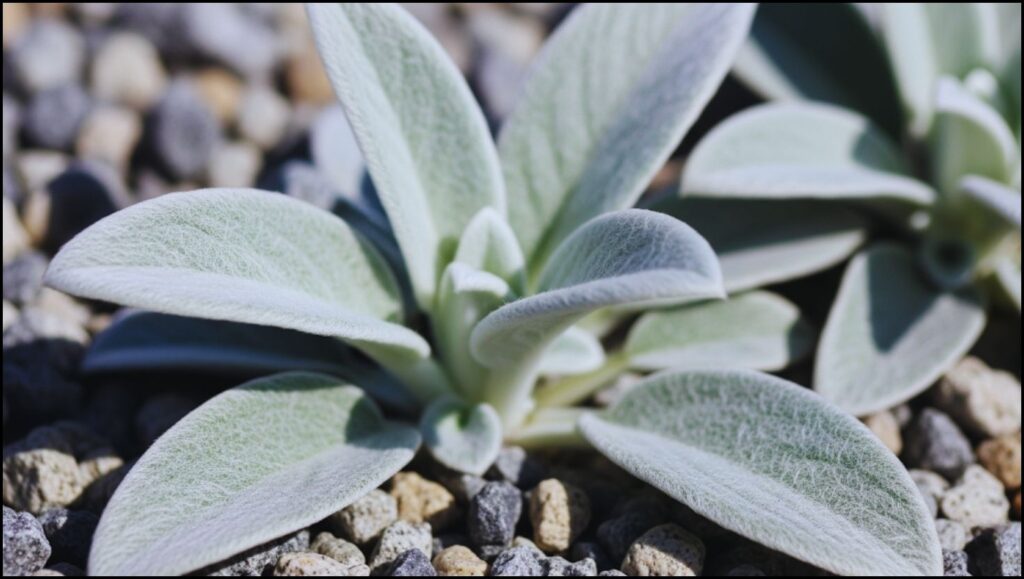
There is a certain magic to a gravel garden. It speaks of intention, of clean lines and quiet beauty—a landscape that feels both thoroughly modern and timelessly serene. More than just a trend, this style of low-maintenance gardening is a smart, sustainable choice for today’s busy homeowner. But the secret to a truly breathtaking gravel garden isn’t just the stone; it’s the thoughtful curation of plants that thrive in it. This guide will introduce you to the best plants for gravel gardens, transforming your vision of a chic, water-wise oasis into a stunning reality.
Let’s explore the six star performers that will bring structure, texture, and life to your modern landscape.
Quick Tips for a Thriving Gravel Garden
Here’s what you need to know to get started:
- Plant in Soil, Not Gravel: Always dig a proper planting hole in the soil beneath the gravel mulch.
- Prioritize Drainage: Choose plants that despise “wet feet.” If you have heavy clay, amend the planting area with compost and grit.
- Think Texture & Form: The most striking gravel gardens rely on contrasts in plant shapes—spiky, soft, mounding, and airy—not just flowers.
- Water Deeply, Not Daily: New plants need regular water to get established, but once they are, deep and infrequent watering encourages strong, drought-resistant roots.
The Secret to Success with Plants for Gravel Gardens
Before we unveil our top picks, it’s crucial to understand the single most important principle of planting in gravel. A common mistake I see gardeners make is treating the gravel itself as a growing medium. Plants cannot root in stone; they need access to the soil below.
The correct method is simple but essential. Pull back the gravel from the area where you want to plant. Dig a hole in the soil that’s at least twice as wide as the plant’s root ball. I often amend this backfill soil with a bit of compost for nutrients and some horticultural grit or small gravel to improve drainage, especially in clay-heavy regions. Place your plant in the hole, ensuring the top of its root ball is level with the surrounding soil grade, backfill, and water it in thoroughly. Only then should you sweep the gravel back around the base of the plant, leaving a small, clear collar right around the stem.
This technique ensures your plants have the soil contact they need while still benefiting from the gravel mulch, which suppresses weeds, conserves moisture, and provides that polished, modern garden design finish.

Our Top 6 Plants for a Stunning Gravel Garden
These selections are chosen for their resilience, beauty, and ability to create a dynamic, year-round display. They are superstars of the drought-tolerant plants world and perfectly suited for this style.
1. Russian Sage (Perovskia atriplicifolia)
Why We Love It: Russian Sage is the embodiment of airy elegance. Its hazy, lavender-blue spires seem to float above finely-cut, silvery foliage, providing height and a soft, cloud-like texture from mid-summer until the first frost. It’s a pollinator magnet and virtually pest-free.
Growing Tips: This plant demands full sun and exceptionally well-drained soil. It is notoriously tough and thrives on neglect once established. In my own garden, I find that cutting the woody stems back to about 6-8 inches in early spring encourages a fuller, more robust plant and prevents it from becoming too leggy. My go-to variety is ‘Little Spire’ for a more compact, upright form that doesn’t flop.
Design Inspiration: Use it as a vertical accent behind lower-growing plants or plant it in drifts to create a shimmering, impressionistic backdrop. It pairs beautifully with the bold forms of succulents and the fine texture of ornamental grasses.
2. Lamb’s Ear (Stachys byzantina)
Why We Love It: If Russian Sage provides the airiness, Lamb’s Ear provides the touchable softness. Its thick, fuzzy, silver-green leaves form a dense, weed-suppressing mat that begs to be touched. It’s an incredibly forgiving plant and one of the best for creating a soft-textured carpet at the front of a border.
Growing Tips: Plant Lamb’s Ear in full sun to part shade. It tolerates poor soil with grace, as long as it’s well-drained. Overly wet conditions, especially in humid climates, can cause the leaves to rot. To keep it looking fresh, simply pull away any browning leaves at the base. The ‘Big Ears’ (or ‘Helene von Stein’) cultivar is a personal favorite because it rarely flowers, keeping the focus entirely on its magnificent foliage.
Design Inspiration: Use it to soften the hard edges of pathways or stones. The silvery color is a wonderful design tool, acting as a neutral link that ties together different colors and textures in your garden palette.

3. Stonecrop (Hylotelephium spectabile ‘Autumn Joy’)
Why We Love It: ‘Autumn Joy’ Sedum is a classic for good reason. It offers four seasons of interest in one powerhouse plant. It emerges in spring with fleshy, jade-green leaves, forms broccoli-like heads of pale green buds in summer, explodes into dusty-pink flowerheads in late summer, and finally deepens to a rich copper-bronze that provides structure well into the winter.
Growing Tips: Full sun is best for the sturdiest stems and most prolific blooms. As with all succulents, excellent drainage is key to preventing root rot. According to guidance from the University of Minnesota Extension, you can even pinch back the stems in late spring to encourage a more compact, branching habit that’s less likely to splay open.
Design Inspiration: Plant in groups of three or five for a bold statement. The sturdy, architectural form provides a perfect counterbalance to the finer textures of grasses and Russian Sage. The dried seed heads look magnificent when dusted with frost.
4. Blue Fescue (Festuca glauca)
Why We Love It: Every modern garden needs the punctuation of ornamental grasses, and Blue Fescue is a perfect choice for gravel settings. It forms neat, hedgehog-like tufts of striking, silvery-blue foliage. Its fine texture and compact, mounding shape provide a cool-toned contrast that makes surrounding plants pop.
Growing Tips: For the best blue color, plant Festuca glauca in full, baking sun and lean (not overly rich) soil. A common complaint I hear is that it tends to die out in the center after a few years. This is perfectly normal! Simply dig up the clump every 2-3 years in the spring, divide it, discard the dead center, and replant the healthy outer sections. The ‘Elijah Blue’ variety is widely considered to have the most vibrant and lasting color.
Design Inspiration: Use Blue Fescue as repeating elements along a path to create rhythm and cohesion. They look stunning tucked into the gaps between larger stones or planted in a grid for a truly contemporary look.
5. Lavender (Lavandula angustifolia)
Why We Love It: Is any garden truly complete without the fragrance of lavender? It brings color, pollinators, and an intoxicating scent that defines summer. English lavender varieties are particularly well-suited to the sharp drainage of a gravel garden, offering beautiful flowers and aromatic grey-green foliage.
Growing Tips: Lavender is a Mediterranean native, so think sun, sun, and more sun. It absolutely requires gritty, well-drained, slightly alkaline soil. Overwatering is its greatest enemy. Prune plants back by about a third after they finish flowering to maintain a compact, bushy shape and prevent them from becoming woody and sparse. My go-to varieties for hardiness and scent are ‘Munstead’ and ‘Hidcote’.
Design Inspiration: A low lavender hedge is a classic for a reason. Planted alongside a sunny path, it will release its fragrance every time you brush past. It also pairs beautifully with the yellow flowers of Yarrow for a timeless French country-inspired combination.
6. Yarrow (Achillea millefolium)
Why We Love It: Yarrow is the cheerful, hardworking wildflower of the gravel garden. Its flat-topped flower clusters provide a completely different shape from the spires and mounds of other plants, and they are beloved by butterflies and beneficial insects. The feathery, fern-like foliage is attractive on its own and stays green for much of the year.
Growing Tips: Like the others on this list, Yarrow is a sun-lover that thrives in average to poor soil with good drainage. It is incredibly drought-tolerant once its roots are established. Modern cultivars offer a fantastic color range beyond the traditional white and yellow. Look for the ‘Moonshine’ variety for its vibrant canary-yellow blooms and silvery foliage, or the ‘Paprika’ for a spicy, rusty-red hue. Deadheading the spent flowers will encourage a second flush of blooms.
Design Inspiration: The flat flower heads of Yarrow are the perfect landing pads for the eye (and for pollinators!). Use them to create broad strokes of color that contrast with the vertical lines of Russian Sage or the spiky forms of grasses.
A Garden That Gives Back
Choosing to create a gravel garden is about more than just aesthetics; it’s about embracing a more sustainable, low-effort approach to gardening. By selecting the right plants for gravel gardens, you design a space that conserves water, reduces maintenance, and provides year-round beauty. It’s a garden that works with nature, rather than against it, giving you more time to simply sit back and enjoy the elegant, modern oasis you’ve thoughtfully created.
The Essential Guide to 7 Sun-Loving Dwarf Shrubs for Brightening Your Garden
